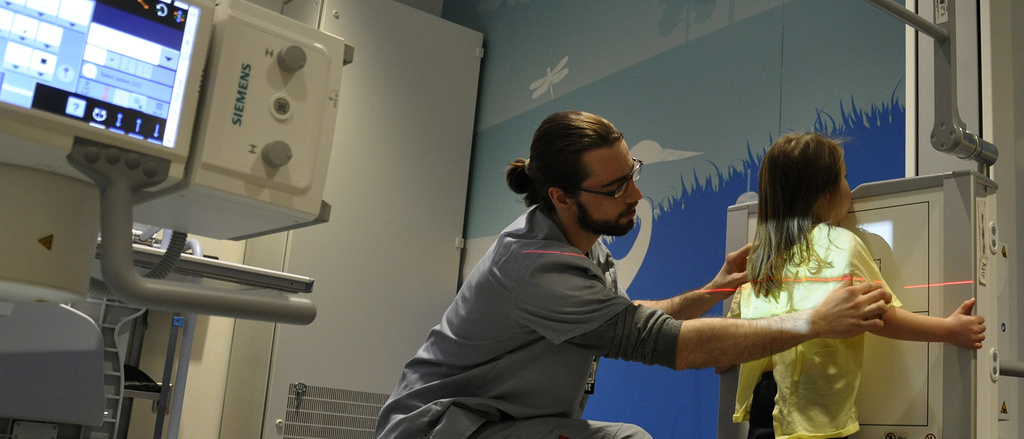The Harmful Effects of UV Radiation in Humans cannot be outweighed even as it is a component of sunlight, and plays a significant role in our daily lives. While moderate exposure to UV radiation is beneficial, excessive rays can have detrimental effects on humans.
This article explores the harmful effects of UV radiation on humans, and its causes and also highlights preventive measures.
The Sun’s energy that reaches the Earth is in the form of solar radiation, which belongs to a broad range of energy known as the Electromagnetic Radiation Spectrum.
Solar radiation (Radiation from the sun) encompasses various forms of energy, such as visible light, ultraviolet light, infrared, radio waves, X-rays, and gamma rays. Of all, UV Rays have the most effect on humans and the environment.
Ultraviolet (UV) radiation is a form of electromagnetic radiation that is emitted by the sun and can have both beneficial and harmful effects on living organisms, including humans.
UV radiation is categorized into three types: UVA, UVB, and UVC, with UVC being the most harmful but largely absorbed by the Earth’s atmosphere.
The Earth’s ozone layer acts as a shield, absorbing the majority of the sun’s harmful UVB and UVC radiation.
However, human activities, particularly the release of ozone-depleting substances (such as chlorofluorocarbons), have led to the thinning of the ozone layer.
The UN Environment Programme stated that the depletion of the ozone layer leads to higher levels of UV radiation reaching the Earth’s surface, resulting in harmful effects on human health.
Causes Of Harmful UV Radiation To Humans
The primary cause of Harmful UV Radiation to Humans has been said to be as a result of Ozone depletion. Ozone depletion is caused by synthetic/manmade chemicals containing halogens.
These substances, collectively referred to as ozone-depleting substances (ODSs), are extensively utilized in numerous everyday products worldwide. Some of which include:
- Chlorofluorocarbons: Among the significant ODSs, chlorofluorocarbons (CFCs) played a crucial role, being commonly employed in air conditioning systems, refrigerators, aerosol cans, and inhalers for asthma patients.
- Hydrochlorofluorocarbons: HCFCs were utilized in the production of car dashboards, insulation foams in residential and commercial buildings, water boilers, and even shoe soles.
- Halons: These were extensively employed for fire protection in offices, computer facilities, military bases, airplanes, and ships.
- Methyl Bromide: This was frequently utilized for fumigating fruits and vegetables to eradicate pests.
To protect against the harmful effects of UVR, simple and effective prevention measures are available. Understanding the risk of UVR exposure and taking practical precautions will reduce the chances of health-related problems.
Harmful Effects of UV Radiation on Humans:
Overexposure to UV radiation can have adverse effects on humans worldwide. These include:
Skin Damage
UV radiation is a major contributor to skin damage, leading to sunburn, premature aging, and the development of skin conditions such as actinic keratosis and photoaging.
Long UV wavelengths (UVB, UVA) induce oxidative stress and this causes the denaturation of protein and can cause sunburn.
Short wavelength radiation (UVC) causes DNA damage to cells. This increases the risk of skin cancer, including melanoma, the most dangerous form of skin cancer.
Eye Conditions
Unprotected exposure to UV radiation can harm the eyes and increase the risk of various eye conditions.
These include photokeratitis (sunburn of the cornea), cataracts (clouding of the eye’s lens), and pterygium (abnormal growth on the surface of the eye).
Long-term UV exposure without proper eye protection can lead to permanent vision impairment or even blindness.
Immune Suppression
UV radiation can suppress the immune system, compromising the body’s ability to defend against infections and diseases.
Prolonged or intense UV exposure weakens the immune response, making individuals more susceptible to viral, bacterial, and fungal infections, including herpes simplex and human papillomavirus (HPV).
Skin Cancer
UV radiation is the primary cause of skin cancer, which is the most common form of cancer globally.
Skin cancers are known to result mainly from ultraviolet radiation (UVR), whether it is from natural sources like the sun or artificial sources.
According to WHO In 2020, more than 1.5 million cases of skin cancer were diagnosed globally, leading to over 120,000 deaths related to skin cancer.
Both UVA and UVB radiation can damage skin cells’ DNA, leading to the uncontrolled growth of abnormal cells. Basal cell carcinoma, squamous cell carcinoma, and melanoma are the main types of skin cancer associated with UV exposure.
Environmental Impact
UV radiation also affects various ecosystems and biological processes.
It can impact the growth and development of plants, damage phytoplankton (microscopic organisms that form the basis of marine food chains), and affect the DNA and survival of marine life.
UV radiation can also contribute to the degradation of materials, including plastics, paints, and textiles.
Skin Type and Sun Protection
Africans, particularly those with darker skin tones, have higher levels of melanin, which provides some natural protection against UV radiation. However, this does not eliminate the risk of sunburn and skin damage.
It is still important for individuals of all skin types to practice sun safety measures such as wearing protective clothing, using sunscreen, and seeking shade during peak UV hours.
UV radiation levels vary across different regions of the world due to factors such as latitude, altitude, atmospheric conditions, and seasonal variations. Generally, UV radiation is higher in tropical regions closer to the equator and at higher altitudes.
Some African countries have high-altitude regions, such as the Ethiopian Highlands and the Rwenzori Mountains.
At higher elevations, UV radiation levels can be more intense due to a thinner atmosphere and reduced protection from the ozone layer. This can increase the risk of UV-related health effects, even in countries located farther from the equator.
Protection against Harmful UV Radiation
- Sun Safety Practices
Practicing sun safety measures is important worldwide to mitigate the risks of UV radiation. These measures include:
- Protective Clothing: Wearing long-sleeved shirts, wide-brimmed hats, and sunglasses with UV protection helps shield the skin and eyes from harmful UV radiation. Dark-colored, tightly woven fabrics offer better protection. seeking shade during peak UV hours
- Sunscreen: Applying broad-spectrum sunscreen with a high sun protection factor (SPF) is crucial to protect the skin from UV radiation. Sunscreen should be applied generously and reapplied every two hours, especially during prolonged sun exposure or when swimming.
- Seek Shade: Limiting direct exposure to the sun, particularly during peak UV hours (usually between 10 am and 4 pm), reduces the risk of UV-related damage. Seeking shade under trees, umbrellas, or using canopies provides additional protection.
- Sunglasses: Choosing sunglasses that provide 100% UV protection helps safeguard the eyes from harmful UV radiation. Look for sunglasses with a UV 400 rating or those labeled as blocking UVA and UVB rays.
- Awareness and Education
Individuals, communities, and governments worldwide need to continue promoting awareness about the risks of UV radiation.
This can be achieved by supporting initiatives aimed at preserving the ozone layer and promoting sun safety practices through educational campaigns.
And also, individuals should be encouraged to take preventive measures and prioritize their health.
Efforts have been made globally to address the issue of ozone layer depletion and mitigate the risks associated with increased UV radiation.
Frequently Asked Questions (FAQs) – Harmful Effects of UV Radiation on Humans
How long does it take for UV radiation to cause sunburn?
The time it takes to get sunburned depends on various factors, including your skin type, UV index, and exposure duration. Generally, sunburn can occur within 15-30 minutes of intense UV exposure.
Are all sunglasses equally effective in blocking UV radiation?
No, not all sunglasses provide adequate UV protection. Look for sunglasses labeled as blocking UVA and UVB rays or those with a UV 400 rating to ensure proper protection.
Can I get enough vitamin D without sun exposure?
While sunlight is a primary source of vitamin D, it’s possible to obtain it through dietary sources such as fatty fish, fortified dairy products, and supplements. Consult a healthcare professional to determine the most suitable approach for maintaining optimal vitamin D levels.
Are tanning beds safer than natural sunlight?
No, tanning beds emit UVA and UVB radiation, which can cause skin damage and increase the risk of skin cancer. They are not a safe alternative to natural sunlight.
Can UV radiation penetrate through clouds?
Yes, clouds do not completely block UV radiation. UV rays can penetrate through clouds, and it is still possible to get sunburned on a cloudy day. It’s important to practice sun protection measures regardless of cloud cover.
Can UV radiation affect people of all skin types?
Yes, UV radiation can affect individuals of all skin types. However, people with lighter skin tones are generally more susceptible to sunburn and skin damage compared to those with darker skin tones.
Conclusion
UV radiation, while necessary for certain bodily functions, can have detrimental effects on human health when exposure is excessive and unprotected.
The harmful effects of UV radiation on humans emphasize the importance of taking preventive measures to minimize UV-related risks. By adopting these practices, you can mitigate the risks associated with UV exposure and promote overall well-being.
Remember, it’s crucial to prioritize sun safety and take appropriate measures to protect yourself from the harmful effects of UV radiation. By adopting preventive practices and being aware of the risks, you can enjoy the benefits of sunlight while safeguarding your health.
Check out the 8 Top Importance of Environmental Scanning in Strategic Management.


